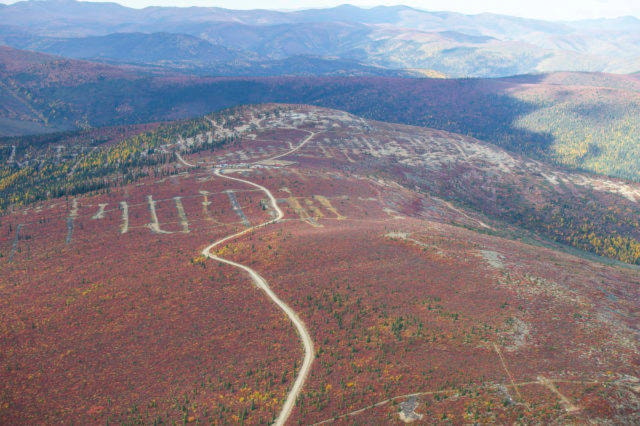Ed Peart
President, Yukon Chamber of Mines
On June 15, the Dawson Regional Planning Commission released its Draft Land Use Plan (LUP) - On the Land We Walk Together/ Nän käk ndä tr’ädäl for an area encompassing 39,854 square kilometres or approximately 10 per cent of the Yukon.
The Yukon Chamber of Mines (YCM) extends its appreciation to the Commission for its hard work in bringing the plan to this stage. Our valued membership of over 700 also appreciates the opportunity to comment on the Draft LUP through the Commission’s public engagement process currently underway until November 1, 2021.
The YCM fully supports land use planning in the territory and believes the process is a valuable tool in providing certainty and encouraging understanding and appreciation of the value different sectors bring to the territory. The Yukon Mineral Development Strategy set some very aggressive timelines for completion of remaining land use plans in the Yukon and the Chamber has already reached out to Yukon Government, First Nations and the Council of Yukon First Nations to pledge our organization’s support for the process and to confirm our commitment to being part of the process in bringing the remaining land use plans to fruition.
As with any draft plan, there are some very good components to the Dawson Commission’s Draft LUP and there are some that are concerning due to potential negative impacts on modern, responsible mining and ultimately, the territory’s socio-economic sustainability. The Yukon Chamber of Mines does not feel the Draft LUP adequately balances all values. We believe all values must be duly recognized and shared if responsible mining is to continue in the territory, while respecting and protecting ecological, heritage, social, cultural and economic values.
According to the Draft LUP, 9.7 per cent of Dawson City’s residents are employed within the industry, as compared to 2.3 per cent of the Yukon’s population. The numbers of businesses and individuals who benefit from the industry is significantly higher. These vital community members are your friends, your family members and your neighbours and their ability to maintain their very livelihoods benefits all Yukoners. The contribution to the Yukon’s economy through exploration and development expenditures for 2019 and 2020 was $139 million and $97 million respectively, according to Natural Resources Canada’s Survey of Mineral Expenditures.
The Dawson Planning Region has been divided into 23 Landscape Management Units (LMUs) identified and categorized based on the Commission’s review of “human use, ecological properties, current or anticipated levels of development and/or identified land use issues.”
According to the Draft LUP, 39.3 per cent of the region has some level of environmental protection and this figure does not include territorial parks such as Tombstone Territorial Park, which on its own, represents a further 5.3 per cent of the planning area.
The result is a staggering 45 per cent of the region already being designated as off-limits to mineral staking and prospecting; which then negates exploration and the possibility of any future development on the industry continuum. Thousands of claims are now designated within Special Management Areas, which are maximum and high conservation areas. They make up 44.59 per cent of the Dawson region and are identified by the Dawson Regional Planning Commission as conservation areas in the June 15th, 2021 Order in Council (OIC) with the purpose of prohibiting entry on those lands.
The remaining 55 per cent of the region is specified as an Integrated Stewardship Area, within which industrial activities are permitted, however under “specific terms and conditions”, which are, at this level of planning, unclear and therefore erode certainty.
Mineral exploration is as much about finding where minerals are not located as it is about finding where they are. The geological knowledge base created over the years in the Yukon is the envy of many jurisdictions, however there is still much to explore. It seems intuitive that if a plan is developed that dictates what activities are to occur then having that knowledge base of the various values is critical in the process.
Future Planning Areas (FPAs), recommended within the plan for sub-regional land use planning, also contribute to reduced certainty as demonstrated by the ongoing Beaver River Sub-Regional Land Use Plan and its delayed outcomes and continuously pushed timelines.
We are proud of our organization’s engagement efforts and successful relationship-building on behalf of our members, with the Government of Yukon, Canada, Yukon First Nations governments and the Council of Yukon First Nations on this, and on a range of other important issues affecting the industry.
The Yukon’s mineral exploration and development industry also adheres to rigorous assessment, permitting and licensing processes through the Yukon Environmental and Socio-economic Assessment Board (YESAB), Yukon’s Quartz Mining Licensing and the Yukon Water Board providing several layers of scrutiny to ensure the best outcome for Yukon residents, governments and communities.
We are also proud to be part of a modern, responsible industry that continues to drive the private sector economy in the Yukon. However, we believe there must be a greater recognition as to how our territory is negatively impacted by government’s continued land withdrawals and other restrictions.
We encourage our members to review the Dawson Regional Planning Commission’s Draft Land Use Plan and participate in the public engagement process so that all aspects of industry’s voice are clearly heard. We also encourage Yukoners to reach out to our team so we can have a fulsome, respectful, and genuine conversation about the Yukon’s future.
The Yukon Chamber of Mines will also be communicating regularly with its membership and Yukoners over the coming weeks and months in order to be directly involved in the re-writing of the Quartz Mining Act and in supporting the Klondike Placer Miners’ Association regarding the re- writing of the Placer Mining Act. We will work to ensure industry is provided with a “seat at the table” and will continue to stand up for the needs and priorities of the industry, including the right of an open entry mineral tenure system.
